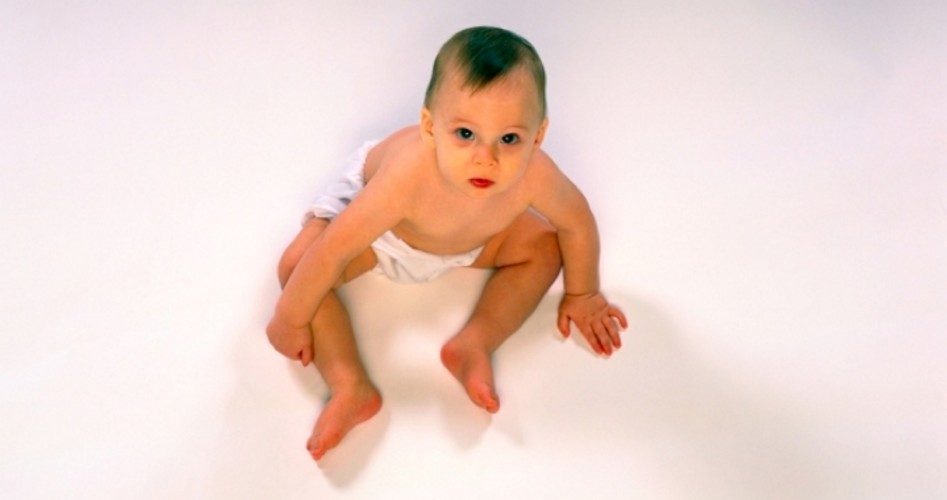
Call it the Obama birth dearth. While the immigrant-fueled birthrate of the United States had recently been fairly robust, it has now dropped below replacement level. And demographers are unsure as to why. Writes Joseph Lawler at Washington Examiner:
The fertility rate fell to a record low 62.9 births per 1,000 women aged 15-44 in 2013, according to the National Center for Health Statistics.
… [T]he total fertility rate, or TFR, the average number of children a woman would have during her child-bearing years, fell to just 1.86, the lowest rate in 27 years. TFR is considered the best metric of fertility. A TFR of 2.1 represents a stable population, with children replacing parents as they die off.
Demographers expected the fertility rate to fall during recession, as financially strapped families put off childbearing. But what has surprised some demographers is both the depth of the decline and the fact that fertility has continued to drop even over the course of the country’s five years of slow but steady recovery. The rate has fallen steadily each year since 2007, when it stood at 2.1 percent.
One factor in the fertility decline demographers did foresee was a falling birth rate among Hispanics in America. While such a trend defies the logic of many who consider immigrant fecundity a given, it’s a pattern observed throughout the developed world: Over time, immigrants tend to assume the lifestyles and birth rates of their host country. As the Daily Mail’s James Nye wrote last year about the United States:
A new study has surprisingly shown up that Hispanic women have the steepest declining birthrates of any group in the United States.
… The new figures have led in part to the total number of American births for 2011 falling to a record low — and around half of what it was during the baby boom years.
… The decline in birthrates was seen to be heaviest among Mexican-American women and those women who had immigrated [sic] from Mexico, falling as much as 25.7 percent.
Many will be even more surprised to learn that this merely mirrors falling fertility in Mexico itself, as that country follows the course of the more than 70 nations with birth rates below replacement level.
But then there’s what the demographers are missing. Many critics would point out that birth rates have recovered every bit as much as the economy has — meaning, not at all. For instance, while the regularly touted unemployment rate is 6.3 percent, this figure does not include those who’ve become so frustrated with the job market that they’ve stopped looking for work. And, quite tellingly, a record number of people today, more than 92 million, are “no longer in the labor force.”
There’s also a record within this record: One in six American men in their prime working years, 25 to 54, is not working. This is 16.7 percent, the highest the figure has been since these records began in 1955. This is significant because those ages also mark prime fatherhood years; if these men aren’t working, however, they’re less likely to marry. And if they’re already married, they’re less likely to have children.
In light of these facts, many analysts say that a clearer picture of job health is provided by the Bureau of Labor Statistics’ “U-6” unemployment figure, which includes not only those looking for work, but also those who’ve given up and the underemployed. This figure currently stands at 12.2 percent.
In addition, some may question the validity of any of these figures, since the government has already been caught fabricating unemployment data. As the New York Post reported last year, the Census Bureau “faked” the 2012 election jobs report, with a bureau employee admitting to the paper that “he was told to make up information by higher-ups at Census.”
Yet the best explanation for the continued baby bust was found by a recent poll that uncovered rampant pessimism in America. Writes CNN’s Tammy Luhby:
The American Dream is impossible to achieve in this country.
So say nearly 6 in 10 people who responded to CNNMoney’s American Dream Poll…. They feel the dream — however they define it — is out of reach.
Young adults, age 18 to 34, are most likely to feel the dream is unattainable, with 63% saying it’s impossible.
… Younger Americans are a cause of great concern. Many respondents said they are worried about the next generation’s ability to prosper.
Some 63% of all Americans said most children in the U.S. won’t be better off than their parents.
Note here that this is an area where perception shapes reality. For while the poll does reflect actual hardship Americans are currently enduring, whatever the economic facts on the ground, if people believe their prospects are dim, they’ll be less likely to get married and have children.
Luhby also points out that while Americans are earning more than their parents, this is only because families now tend to have two earners. This is significant because, as the informative documentary Demographic Winter points out, few factors impact as negatively upon birthrates as that of women in the workforce. When women have jobs and take on characteristically masculine roles and responsibilities, they tend to delay childbearing until their less fertile years; they then often have only one child — and sometimes none at all.
And, contrary to conventional wisdom, declining birthrates have serious ramifications for civilization. As I wrote when reviewing Demographic Winter:
As the old increase in number relative to the young, there will be fewer workers to drive the economy and fund Social Security and Medicare. As a result, the latter may be taxed more heavily and, in turn, work less and have even fewer children, creating a vicious circle. Also, most innovators are between 30 and 44 years of age; thus, innovation will decrease commensurate with the decline of that group. Moreover, with the reduction in overall consumer spending, companies will have less incentive to fund innovation. [Economist] Gary S. Becker sums up the effects well by paraphrasing Adam Smith: “Depressions are associated with decreasing population.”
… As demographic winter descends upon the West, the economic bust will affect the whole world…. Countries relying on exports, such as China, will see overseas markets shrink. Undeveloped nations, which provide the labor force via immigration that developed countries aren’t providing for themselves, will continue to drain their own labor pool. The result could be a worldwide depression, with only some enjoying a spring thaw. Much of the developing world will still have the demographics to rebound, but the West will not. It may fade into history, much as the Ottoman, Greek, and Roman empires, paving the way for a more youthful, vigorous hegemon.
This is why Roman emperor Augustus Caesar chastised his nobles for failing to reproduce. It is why Joseph Stalin, brutal mass murderer that he was, outlawed abortion in the former USSR. East or West, yesterday or today, demographics is destiny.



